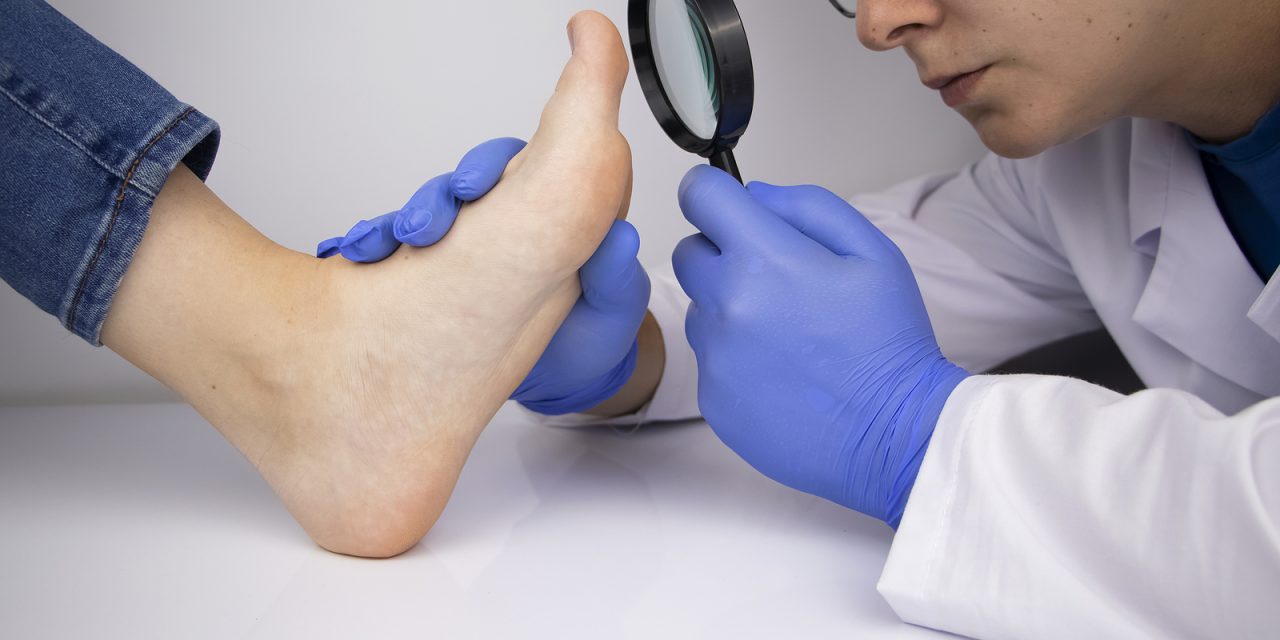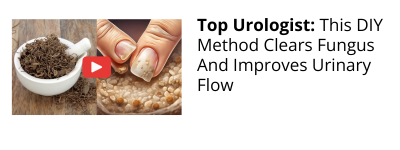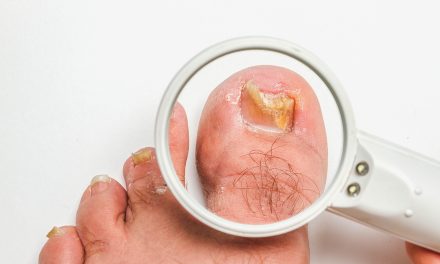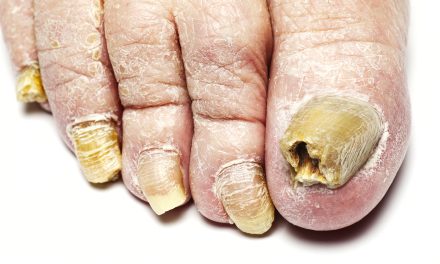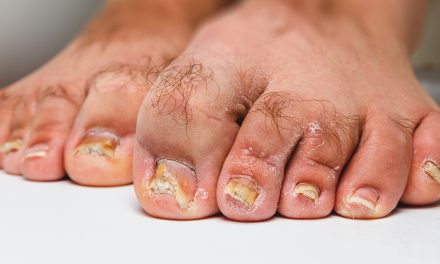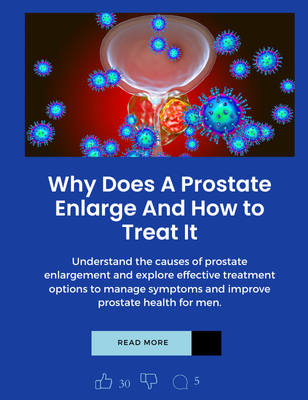Toenail fungus, or onychomycosis, is a common condition that many people experience at some point in their lives. It’s characterized by a noticeable change in a toenail’s color, thickness, and overall health. While it is persistent and sometimes hard to eliminate, with the proper treatment, it is possible to get rid of toenail fungus. Treatment approaches can vary based on the severity of the infection and individual health factors.
An effective treatment plan for toenail fungus often includes both medical treatments and home management strategies. Medical options may involve topical ointments, such as EMUAID, which is designed to kill bacteria and fungus, or prescription oral medications, which promote the growth of a new, uninfected nail. Equally important are preventive measures and lifestyle adjustments that help to stop the spread of the fungus and lower the chance of recurrence.
Key Takeaways
- Toenail fungus is treatable with persistence and the correct approach.
- A combination of medical treatments and home remedies can be effective.
- Ongoing preventive measures are crucial to prevent recurrence.
Understanding Toenail Fungus
Toenail fungus, medically known as onychomycosis, is a common fungal infection of the nails. This condition results when various types of fungi, including dermatophytes, yeast, or molds, infiltrate the nail bed, nail plate, or both. Infections can cause nails to become discolored, thickened, brittle, and separated from the nail bed.
Characteristics of Onychomycosis:
- Nail Changes: Nails may turn white, yellow, or brown.
- Texture: Nails often become thicker and may have a clumped texture.
- Brittleness: Infected nails can become crumbly or ragged along the edges.
- Pain: There may be discomfort, especially when wearing shoes.
Common Causes:
- Contact: It can be contracted in damp communal areas, like gyms or pools.
- Trauma: Injury to the nail may increase susceptibility.
- Circulation: Reduced blood flow can contribute to the risk.
The fungal organism responsible for most cases is a dermatophyte. These thrive in warm, moist environments and feed on keratin, a protein found in nails. Onychomycosis is more frequently observed in toenails because they provide a suitable environment for fungal growth due to less blood circulation and often prolonged encasement in shoes.
Treatment Options:
- Medication: Topical or oral antifungal drugs can be effective.
- Hygiene: Keeping nails trimmed, dry, and clean helps prevent spread.
- Environment: Avoiding moist environments reduces the risk of infection.
Toenail fungus can be a stubborn condition, and while mild infections may resolve with proper self-care, more severe cases often require medical intervention. It’s important to consult a healthcare provider if self-care has not been effective or if the nail becomes increasingly discolored, thickened, or misshapen.
Causes and Risk Factors
Understanding the causes and risk factors of toenail fungus is crucial for prevention and treatment. Factors such as age, the presence of diabetes, and exposure in communal areas can significantly increase the risk.
Age and Toenail Fungus
As individuals age, their nails can become more brittle and dry, leading to cracks that allow fungi to enter. These conditions make older adults more susceptible to toenail fungal infections. It’s not uncommon for those over 60 to experience such issues more frequently.
Impact of Diabetes on Nail Health
People with diabetes are at a higher risk for a myriad of foot problems, including toenail fungus, due to the impairment of blood circulation and the weakening of the immune system. This can make fighting off infections and promoting healing more challenging.
Infection Risks in Communal Areas
Frequenting communal areas, such as gyms, swimming pools, and locker rooms, barefoot increases the chance of coming into contact with the fungi responsible for nail infections. These environments are typically warm and moist, which are ideal conditions for fungal growth. It is especially important for individuals with a weakened immune system to take precautions in such areas.
Symptoms of Toenail Fungus
Toenail fungus, medically termed onychomycosis, occurs when fungi infect one or more nails. A tell-tale sign of a fungal infection is a thickened nail. The condition starts small, but as it progresses, it can cause the nail to become discolored, often displaying white or yellow-brown hues.
Typically, an infected nail may appear:
- Thickened: Unnaturally thicker than usual, making it difficult to trim.
- Discolored: Nails may turn shades of yellow, brown, or even green.
- Misshapen: Odd shape or distorted nail that doesn’t grow straight out.
- Brittle, crumbly or ragged: The texture of the nail might change, nails can become brittle and pieces can break off.
A person with a toenail fungal infection may also experience:
- Dark color, caused by debris building up under the nail.
- Pain: Discomfort or pain, particularly when wearing shoes or walking.
In some cases, the nail may separate from the nail bed, a condition known as onycholysis, which can be quite painful and provide a space for infection to worsen.
The appearance of the toenail can be alarming, but it’s the risk of further complications that pushes individuals to seek treatment. It’s important to consult a healthcare professional if these symptoms appear, as timely intervention can prevent the infection from spreading and causing more serious problems.
Diagnosis of Toenail Fungus
When an individual suspects they have toenail fungus, it’s essential to consult a health care provider or a dermatologist for an accurate diagnosis. Medical professionals typically begin with a visual examination of the nail(s) for certain signs like yellowing, thickening, or cracking.
In some cases, further tests may be necessary to identify the type of fungus causing the infection. This usually involves taking a nail clipping or scraping. The sample is then sent to a lab for analysis, which can include:
- KOH (potassium hydroxide) test: To reveal fungal elements on a microscopic level.
- Fungal culture: Determines the specific fungus species.
- PAS (periodic acid-Schiff) stain: Helps to detect fungal cells within the nail.
Identifying the exact type of fungus is crucial for determining the most effective treatment plan. Below is a summary of the typical testing process:
| Step | Action |
|---|---|
| 1 | Visual inspection |
| 2 | Sample collection |
| 3 | KOH test |
| 4 | Fungal culture test |
| 5 | PAS stain |
Diagnosis is a straightforward process. Health care providers are equipped with the knowledge to recognize and test for toenail fungus, ensuring they prescribe the right treatment to manage the infection.
Medical Treatments
Toenail fungus, or onychomycosis, can be persistent and challenging to eliminate. Medical treatments often involve the use of prescription medications and can sometimes include advanced techniques to address the infection. These solutions are designed to target the underlying fungus effectively, although they may come with certain side effects or require prolonged usage.
Prescription Medications
Oral Antifungal Drugs: Oral medications typically prescribed to treat toenail fungus include terbinafine and itraconazole. These drugs help a new nail grow free of infection, slowly replacing the infected part. Terbinafine is taken daily for about six to twelve weeks, and itraconazole is taken in pulse doses, one week per month for two to three months. It’s important to note that oral antifungal drugs can cause side effects such as skin rash and liver damage; therefore, doctors may conduct blood tests to monitor health throughout treatment.
- Topical Treatments: In conjunction with oral medications or for milder cases, antifungal creams or ointments may be applied directly to the affected nails. There’s also an antifungal nail polish named ciclopirox that is another option, which needs to be applied daily for an extended period, typically up to a year.
Advanced Treatment Options
Laser Therapies: Recent advancements have introduced laser and light-based therapies as potential options for toenail fungus treatment. These procedures aim to destroy the fungi without damaging the surrounding nail tissue. While they are sometimes marketed as quick and painless treatments, evidence regarding their long-term effectiveness varies, and they may not be covered by insurance due to their classification as cosmetic procedures.
- Photodynamic Therapy: Involves the usage of light-sensitive compounds that become activated by light exposure to eliminate fungal cells.
- Laser Treatment: Typically involves a course of treatment sessions with a specialized laser designed to target and kill fungal organisms.
Home Remedies and Self-Care
When tackling toenail fungus, individuals can find potential benefits from a selection of home remedies that may assist in alleviating the condition. It’s important to remember that while these methods may offer relief, they should not replace professional medical advice if the infection is severe or persistent.
- Tea Tree Oil: This natural fungicide has been known to help with fungal infections when applied directly. A few drops of tea tree oil can be applied to the affected nails twice daily.
- Topical Treatment: Over-the-counter antifungal creams or ointments can help clear up the fungus when applied consistently as directed on the product’s packaging.
In addition to targeted treatments, establishing robust self-care routines is vital for managing and potentially preventing the recurrence of toenail fungus.
| Daily Self-Care Practices | Description |
|---|---|
| Keep nails trimmed and clean | This helps prevent fungi from taking hold under the nail bed. |
| Wear breathable footwear | Reduces moisture buildup which fungi thrive in. |
| Change socks regularly | Keeps feet dry, minimizing fungal growth environment. |
In environments like public showers or locker rooms, wearing sandals may help prevent the spread of infections. Maintaining dry, clean feet and nails lays a strong foundation for preventing fungal infections. If one’s condition does not improve with these methods, consulting a healthcare provider is recommended.
Preventive Measures
Preventing toenail fungus involves maintaining good foot hygiene and being cautious in environments where fungi thrive. Individuals can take several measures to reduce the risk of infection:
- Foot Care: Clean feet daily with soap and water, drying them thoroughly afterward, especially between the toes where moisture can help fungus grow.
- Nail Trimming: Keep toenails trimmed, cutting straight across to prevent ingrown nails and potential for fungal infections.
The choice of footwear also plays a vital part in prevention. One should consider the following:
- Breathable Footwear: Opt for shoes that allow air to circulate, reducing moisture build-up that fungi favor.
- Protective Footwear: When visiting damp public places like gym showers or swimming pools, wearing sandals or flip-flops can help prevent direct contact with surfaces that may harbor fungus.
Footwear Guidelines
| Environment | Suggested Footwear |
|---|---|
| Public Showers | Flip-flops, Sandals |
| Gyms, Pools | Water-resistant Sandals |
| Everyday Use | Breathable Shoes |
Regarding nail polish, it’s important to:
- Use antifungal nail polish if one prefers wearing nail polish, which can minimize the risk of fungal infection.
By following these strategies, individuals enhance their defense against toenail fungus.ænd
Potential Complications
When discussing toenail fungus, it’s crucial to consider the possible complications that may arise if the condition is left untreated. Toenail fungus, medically known as onychomycosis, typically begins as a minor cosmetic issue but can potentially lead to more severe problems.
- Spread: The infection can spread to other toenails, the skin, or even the fingernails if not adequately managed.
- Bacterial Infection: A fungal infection may pave the way for a secondary bacterial infection, which can be more severe, sometimes leading to cellulitis.
- Pain and Discomfort: As the nail becomes increasingly damaged, the chance of pain and discomfort when walking or wearing shoes increases.
Complications of toenail fungus are particularly concerning for individuals with weakened immune systems or those living with diabetes. For these patients, any foot problems, including fungal infections, need to be monitored closely due to an increased risk of complications like ulcers or even the necessity for amputation.
Prevention and effective treatment are vital to managing toenail fungus and mitigating its risks. Prompt medical attention can prevent the infection from becoming a persistent issue. Practices include:
- Keeping nails trimmed and clean
- Ensuring shoes fit properly to avoid excess pressure on the toes
- Avoiding walking barefoot in communal wet areas
For those dealing with a fungal nail infection, professional medical advice should be sought to explore treatment options, which may involve topical ointments, oral antifungals, or in some cases, nail removal. It’s essential to address toenail fungus early to prevent complications that can be much more than a cosmetic nuisance.
When to Consult a Healthcare Provider
When dealing with toenail fungus, certain conditions warrant a visit to a healthcare provider sooner rather than later. If you notice any of the following symptoms, seeking professional medical advice is recommended:
- Persistent Pain: If toenails become painful or there is discomfort when walking, this symptom should not be ignored.
- Severe or Widespread Infection: Should the fungal infection appear to spread aggressively or substantially impair the nail structure, medical intervention may be required.
- Signs of Secondary Infection: Redness, swelling, or pus may indicate a bacterial infection, necessitating immediate care.
- Underlying Health Conditions: Those with diabetes or a weakened immune system are more prone to complications and should consult with a healthcare provider upon noticing any changes to their toenails.
Individuals who have continuously treated their fungal infection without seeing improvement, or if the condition has recurred, should consider a visit to a specialist. A dermatologist is trained to deal with skin, hair, and nail issues and can provide more targeted treatment options.
Treatment options can vary from prescribed topical ointments to oral medications, which a healthcare provider can advise on based on the severity and nature of the fungal infection. Remember that toenail fungus can be stubborn, and a healthcare provider is best equipped to help manage the condition effectively while minimizing potential complications.
Lifestyle and Toenail Health
Maintaining healthy toenails involves more than just grooming; it is closely connected to one’s overall lifestyle choices. Diet plays a crucial role in nail health. A nutritious diet that includes biotin-rich foods like eggs, almonds, and whole grains can strengthen nails. Foods high in antioxidants and omega-3 fatty acids, like fish and leafy greens, support the body’s ability to fight off toenail fungus and other infections.
When it comes to shoes, choosing the right footwear is essential. They should not only fit well and offer support but also allow for adequate air circulation to prevent excessive moisture that fosters fungal growth. For instance, wearing sandals or flip-flops in communal areas can limit exposure to infectious agents.
The state of one’s blood flow also impacts toenail health, particularly in how it helps the body’s immune system to detect and manage infections. Regular exercise promotes good circulation, thereby aiding in toenail health maintenance.
A table summarizing the key factors is presented below:
| Factor | Recommendation |
|---|---|
| Diet | Include foods rich in biotin, antioxidants, and omega-3s. |
| Shoes | Wear breathable footwear and protect feet in shared spaces. |
| Blood Flow | Engage in activities that promote circulation. |
Regular hygiene practices, such as trimming the nails straight across and dry, prevent the buildup of harmful fungi and bacteria under the toenail. It’s also advised to avoid nail polishes and artificial nails as they can trap moisture and further contribute to fungal infections.
In conclusion, one’s daily habits and choices significantly influence the health of their toenails. Adhering to these lifestyle modifications can reduce the risk of fungal infections and aid in maintaining overall toenail health.
Frequently Asked Questions
This section addresses some of people’s most common queries about managing and treating toenail fungus, highlighting various treatments and the expected course of recovery.
What methods are effective for eliminating toenail fungus?
Treatment for toenail fungus often involves antifungal medications applied directly to the nail. In some cases, oral antifungal drugs may be prescribed to promote new nail growth free from infection. An example is medication like ciclopirox, which is applied as an antifungal nail polish.
How can one tell if a toenail fungus infection is healing?
Signs of improvement include a decrease in nail discoloration, a reduction in nail thickness, and new, healthy nail growth at the base of the nail. The infected part of the nail may remain until the healthy nail grows in ultimately.
What is the timeline for treating toenail fungus with hydrogen peroxide?
There is no specific timeline for treating toenail fungus with hydrogen peroxide as its effectiveness varies and is not typically the primary treatment healthcare providers recommend. It is often used as a home remedy, and results, if any, can take several months.
Is it possible to eradicate fungal infections in toenails completely?
It can be challenging to completely eradicate toenail fungus as the infections are known to be stubborn and persistent. Treatment can be prolonged, and reinfection is common. However, with proper treatment and nail care, it is possible to improve the condition of the nails significantly.
What are the treatment options for severe nail fungus?
For severe fungal infections, treatment options may include prescription oral antifungals, topical treatments, or in some cases, nail removal. Nail removal can result in a more apparent nail growing back, but it might take a year or so for complete regrowth.
Are there any risks of losing a toenail due to fungal infection?
If a fungal infection becomes severe, it may cause the nail to become detached from the nail bed. In some cases, the infected nail may need to be removed by a healthcare provider to treat the infection and allow a healthy nail to grow back.

